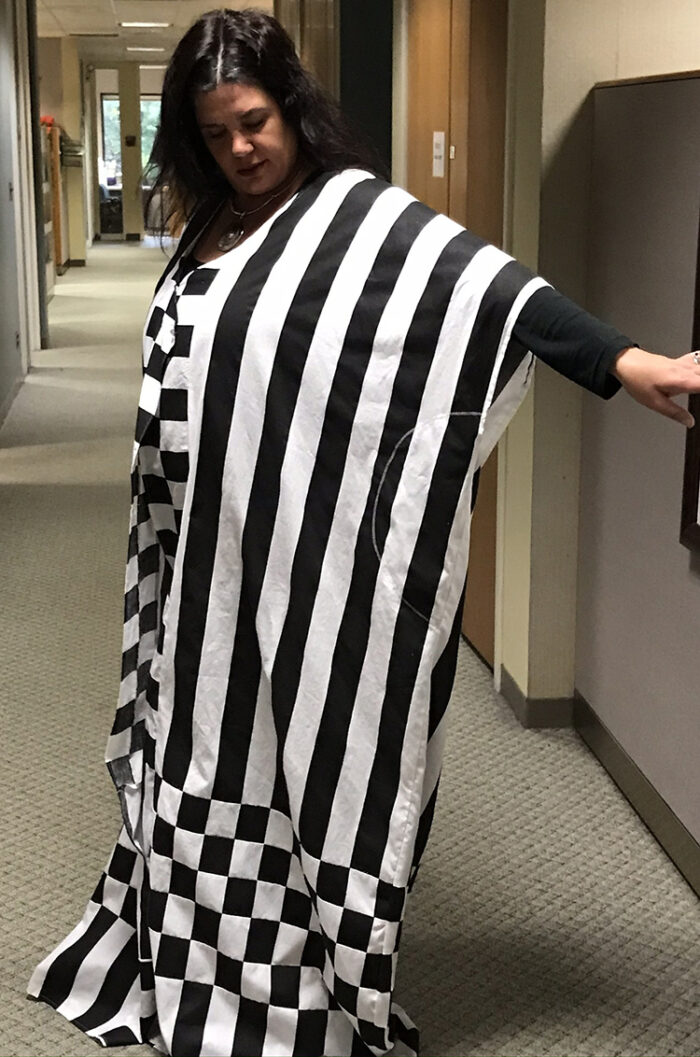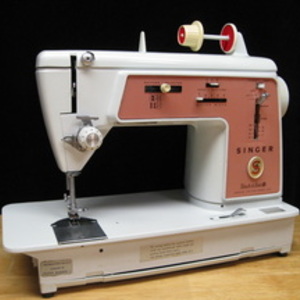
If you are thinking about getting your first sewing machine, buying a replacement, or acquiring an upgrade, this episode of Sewing With Threads is for you. The Threads editors highlight sewing machine features they can’t do without, their experiences with vintage machines, and how to approach shopping for a new machine.
Be sure to also check out the editors’ “5 Reasons for Owning a Sewing Machine.“
Favorite sewing machine features
Portability: Editorial Director Sarah McFarland started sewing on an old metal sewing machine, which was heavy and cumbersome. That’s why she likes portability now.
Ease of use: Digital Brand Manager Becca Ryan’s first sewing machine when she went to college was a bare-bones version she dreaded using for years. She’s finally purchased a higher-end machine that makes sewing a pleasure every time. Becca likes the new machine’s automatic threader, as well as the myriad stitch patterns she can play with. She’s a quilter and a garment sewer, so she enjoys discovering and using all the convenience features, too. She combined her quilting and garment-sewing passions in a costume inspired by Emilie Flöge.

Reliability: Senior Technical Editor Carol J. Fresia prefers a smooth and solid-functioning machine. Having a well-built machine remains a priority, even if it has fewer features, she says. The one-step buttonhole function is the single feature she would rather not be without.
Mechanical vs. computerized: Most of us like computerized machines for convenience. Sarah doesn’t care about hundreds of decorative stitches. But Becca loves them because they give her endless potential to express her creativity.
Flat bed: Sarah finds a substantial flat bed to be helpful for supporting the work. This increases sewing accuracy.
Other features the staff appreciates are a tilt-to-open accessories compartment, plenty of lighting, drop-in bobbin, on-demand locking stitch, easy-to-adjust needle position, a hard cover with an opening for the power cord, and a smooth throat plate.
Vintage sewing machines
Becca and Sarah own and appreciate the benefits of vintage sewing machines. In Becca’s case, her machines don’t work, so they are mostly decorative items. Sarah, a skilled tinkerer, has made some vintage machines work for her. However, she offers a few words of caution before buying a vintage machine and an observation about the presser feet on older machines.
You can find out more about vintage machines in this post by former Digital Ambassador Peter Lappin.
The editors point out that contemporary machines may be marketed for specific purposes, such as quilting, but most machines can be used for nearly any type of sewing. Smaller machines may not be suitable for large-area quilting, and long-arm machines aren’t ideal for garment sewing. Overall, the features they most appreciate are those that provide the greatest control.
How many is too many?
Becca says she owns seven (two of which are vintage and don’t work—yet), including those she inherited. Carol has four, only one of which is used regularly. One machine, salvaged from floodwaters that invaded her home, she keeps for sentimental reasons. Sarah has seven, and she uses at least five of them regularly. Each has special features she likes.
Shopping for a sewing machine
Purchase from a dealer. Even bottom-of-the-line machines made for a dealership are better than the same brand of machines purchased at a big-box store.
Be prepared. Explain what you need, and know what your budget is. Make a checklist of features you want.
Test the machine. Do this on fabrics you want to sew.
A good dealer will respect your parameters and help you find a machine that is a good fit for you and your needs. They’ll also offer classes so you can become confident working with your new machine.
If you live nowhere near a local dealership, you may be able to find a dealer that sells online. Try to reach a live person there to discuss what you want or need, and find out about what support may be available.
 Today’s episode is brought to you by our friends at Baby Lock. Did you hear? Baby Lock recently launched five new sewing, quilting, and embroidery machines—the Chorus, Ballad, Array, Vesta, and Flare. These new machines come with a variety of innovative features and accessories, so you can prep less and sew more. Visit your local Baby Lock retailer to try out these new machines and complete the Sew More Challenge to earn a coupon for 20 percent off manufacturer’s suggested retail price of Baby Lock-branded merchandise. Visit BabyLock.com to learn more.
Today’s episode is brought to you by our friends at Baby Lock. Did you hear? Baby Lock recently launched five new sewing, quilting, and embroidery machines—the Chorus, Ballad, Array, Vesta, and Flare. These new machines come with a variety of innovative features and accessories, so you can prep less and sew more. Visit your local Baby Lock retailer to try out these new machines and complete the Sew More Challenge to earn a coupon for 20 percent off manufacturer’s suggested retail price of Baby Lock-branded merchandise. Visit BabyLock.com to learn more.
We have created a podcast survey to help guide our content. Please take a moment to answer a few questions.




































I found this episode to be so helpful. I've been thinking about buying a new machine, and unsure of where to start. You covered so much! Thank you!